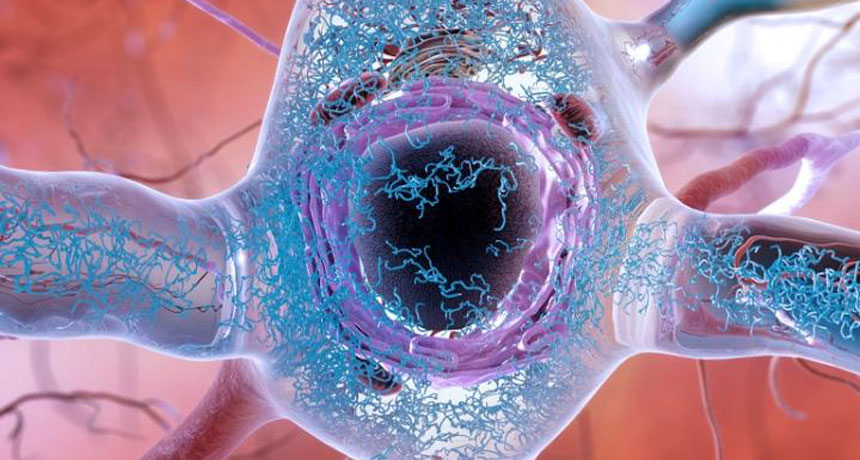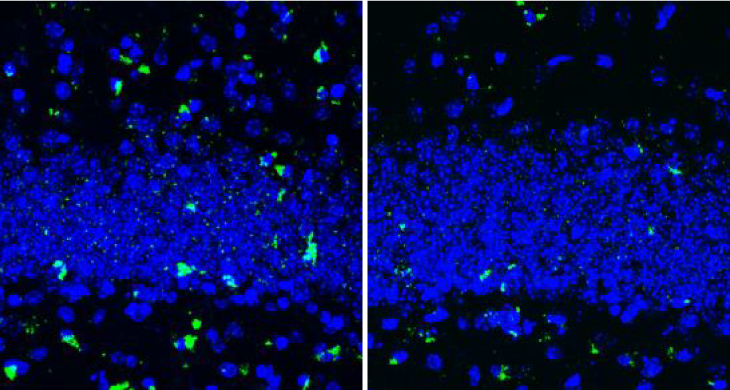Over-the-hill cells may cause trouble in the aging brain
Killing senescent cells in the noggins of mice prevented memory loss

TANGLED UP Senescent brain cells that no longer do their jobs properly may have a hand in creating tangles of tau (illustrated in blue inside a nerve cell) and, ultimately, dementia, a mouse study suggests.
UT Southwestern







